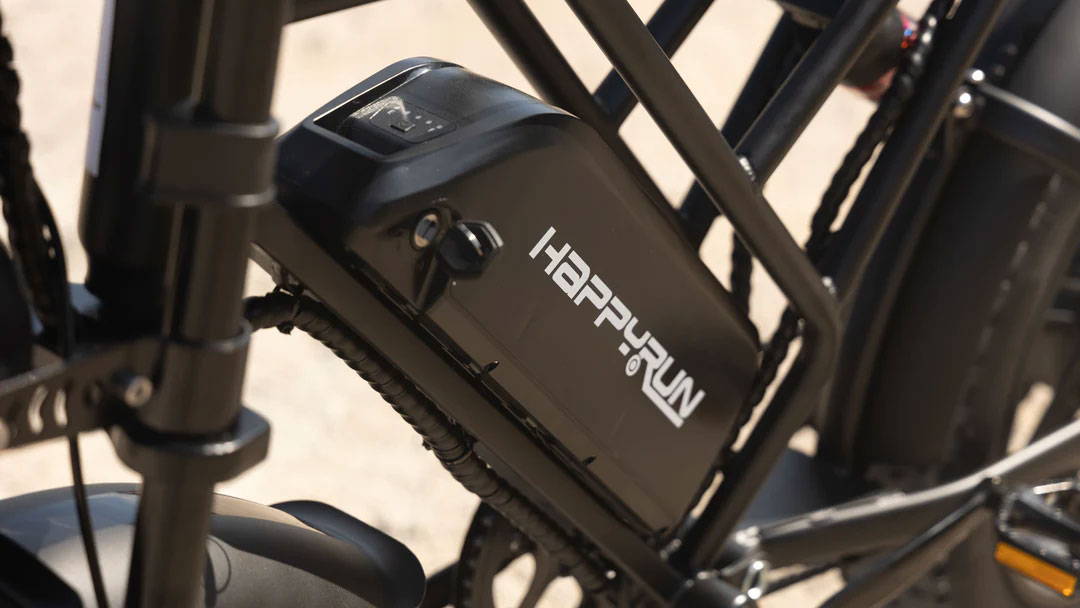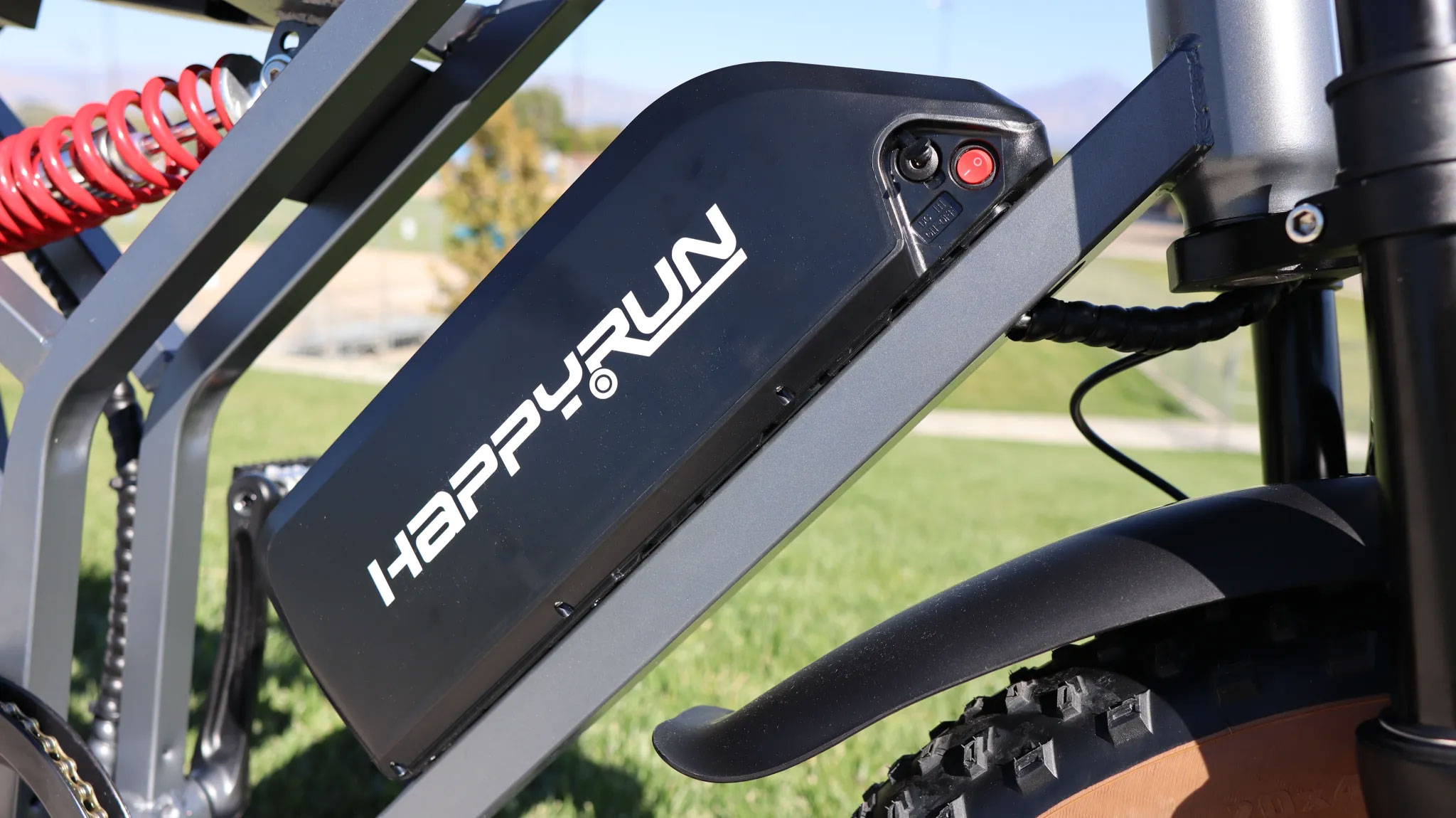
E-Bike Battery Maintenance: Ensuring Longevity and Performance
Commuter ebikes have revolutionized the way we commute, explore, and enjoy the great outdoors. At the heart of this electric revolution lies the unsung hero: the e-bike battery. These compact powerhouses are responsible for propelling us forward with every pedal stroke. But, like all heroes, they need care and attention to perform at their best.
In this comprehensive guide, "E-Bike Battery Maintenance: Ensuring Longevity and Performance," we'll uncover the secrets to keeping your e-bike battery in top shape.
Join us as we explore the dos and don'ts of e-bike battery care, demystify battery chemistry, and ponder the value of upgrading your e-bike's power source.
Maximizing Battery Life: Dos and Don'ts for E-Bike Owners
Proper battery maintenance is the key to unlocking the full potential of your e-bike's power source. Here are some essential dos to keep in mind:
- Follow the Manufacturer's Guidelines: Consult your pedal ebike manufacturer's instructions for specific charging and maintenance recommendations. They understand your battery better than anyone else.
- Charge Regularly: Regularly charge your battery, even if you haven't used your e-bike for a while. Partial discharges and charges are better for lithium-ion batteries than full discharges.
- Store in Moderate Temperatures: Extreme temperatures can harm your battery. Store your e-bike in a cool, dry place, and avoid exposing it to freezing cold or scorching heat.
- Keep Connectors Clean: Periodically clean and inspect battery connectors and terminals. Use a soft brush to remove dirt and debris, ensuring a solid connection.

HappyRun Electric Bike Battery
Don'ts to Avoid Battery Damage
Just as important as knowing what to do is understanding what to avoid to prevent battery damage:
- Overcharging: Overcharging your battery can lead to overheating and reduced lifespan. Use a charger with an automatic shut-off feature or a timer to prevent overcharging.
- Extreme Temperatures: Don't subject your battery to extreme cold or hot temperatures. Extreme cold can reduce capacity, while heat can cause thermal runaway and safety hazards.
- Neglecting Maintenance: Skipping regular maintenance can lead to corrosion and poor connections. Neglected batteries are more likely to degrade quickly.
- Discharging Completely: Avoid letting your battery run completely flat. Lithium-ion batteries can become unstable if discharged too deeply.
Battery Chemistry Explained: Li-ion, LiPo, and Other Types
Lithium-ion (Li-ion) Batteries
Lithium-ion batteries are the workhorses of the e-bike world. Here's what you need to know about them:
- Chemistry Explained: Li-ion batteries use lithium ions to store and release energy. This chemistry offers a high energy density, making them lightweight and efficient.
-
Advantages:Li-ion batteries are known for their energy efficiency, long lifespan, and relatively low self-discharge rate. They're the standard choice for most e-bikes due to their overall reliability.
Lithium Polymer (LiPo) Batteries
- LiPo Chemistry: LiPo batteries use a different electrolyte than Li-ion batteries, which allows for higher discharge rates and lightweight designs.
- Advantages: LiPo batteries are prized for their lightweight construction and ability to deliver high bursts of power. They are commonly found in high-performance e-bikes.
Other Battery Types
- Nickel-Cadmium (NiCd): NiCd batteries are durable but less energy-efficient than lithium-based batteries. They have largely been replaced by Li-ion technology in e-bikes due to their lower energy density and toxic cadmium content.
- Nickel-Metal Hydride (NiMH): NiMH batteries are an eco-friendly alternative to NiCd, but they still lag behind Li-ion batteries in terms of energy density and performance.
Common Battery Issues and Troubleshooting
- Sudden Drops in Capacity: If you notice that your e-bike's range has significantly decreased, it could be due to factors like extreme temperatures, aging battery cells, or overcharging. Troubleshoot by checking your charging habits, avoiding extreme temperatures, and consulting with your pedal ebike manufacturer or dealer for a battery health assessment.
- Charging Issues: Charging problems can be frustrating. If your battery doesn't charge as expected, start by checking the charger and connections. Ensure that the charger is properly plugged in and that the battery's connectors are clean and secure. If problems persist, consult your manufacturer's troubleshooting guide or seek professional assistance.
- Slow Charging: Slow charging can result from various factors, including using an incorrect charger or charging at high temperatures. Ensure you're using the right charger and avoid charging your e-bike immediately after a long, demanding ride when the battery is hot. Give it time to cool down before charging.
- Charger Error Codes: Modern e-bike chargers may display error codes. Refer to your manufacturer's manual to decipher these codes and take appropriate action. Common error codes may indicate issues like overheating or a disconnected battery.
- Voltage Imbalance: A common issue in e-bike batteries is voltage imbalance among cells, which can lead to reduced capacity. Some e-bike chargers have a balancing function to address this, but if not, consider professional battery balancing services.
Battery Safety Practices
- Safe Removal and Installation: When removing or installing your e-bike battery, always follow the manufacturer's guidelines. Disconnect the battery carefully, ensuring there's no electrical connection before physically removing it from the bike. Install it securely to prevent any accidental dislodging during rides.
- Secure Storage: Store your e-bike battery in a cool, dry place away from direct sunlight and extreme temperatures. Avoid storing it in excessively hot or cold environments, as this can damage the battery cells and reduce performance.
- Handling Damaged Batteries: If you suspect your battery is damaged, such as signs of swelling, overheating, or unusual odors, handle it with extreme caution. Do not attempt to charge or use a damaged battery, as it can pose safety risks. Contact your manufacturer or a certified technician for guidance on proper disposal and replacement.
Battery Management Systems (BMS)

HappyRun Mountain Electric Bike Battery
Upgrading Your E-Bike Battery: Is It Worth It?
- Signs of Battery Wear: If you notice decreased range, reduced capacity, or frequent power dips, your battery may be showing signs of wear.
- Assess Your Riding Needs: Consider your typical riding conditions and requirements. Will a new battery align with your riding style and goals?
Benefits of Battery Upgrades
- Increased Range: A higher-capacity battery can extend your e-bike's range, allowing for longer journeys without frequent charging stops.
- Improved Performance: Newer batteries may offer better performance, delivering more power and efficiency for a zippier ride.
- Compatibility: Upgrading to a newer battery may also enhance compatibility with advanced e-bike technologies and accessories.
Factors to Consider
Before taking the plunge, carefully weigh these factors:
- Cost: Upgrading your battery can be a significant investment. Compare the cost of a new battery with the benefits it offers to ensure it aligns with your budget.
- Compatibility: Ensure the new battery is compatible with your e-bike model. Some upgrades may require additional components or modifications.
- Warranty Coverage: Check if the manufacturer offers a warranty on the new battery. It provides peace of mind and protection against unexpected issues.
































Leave a comment